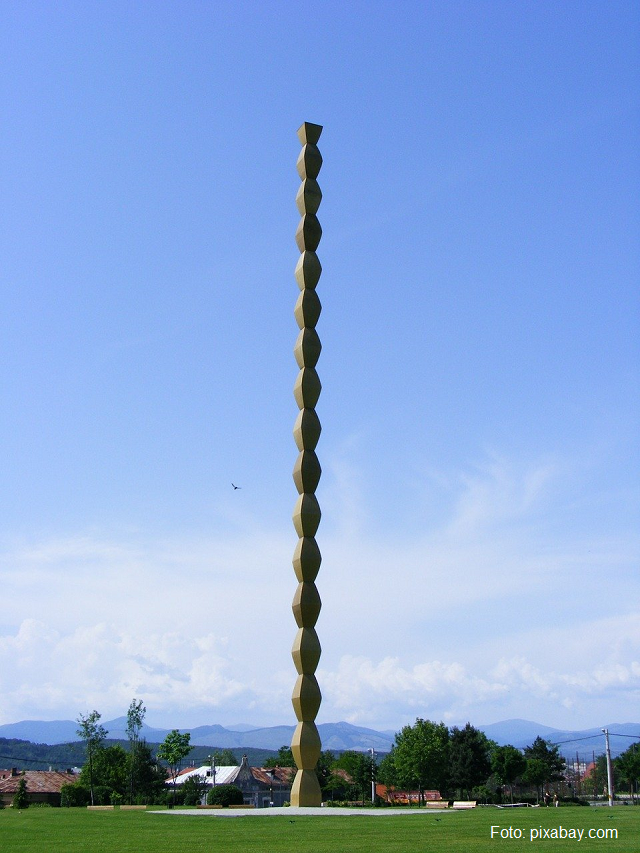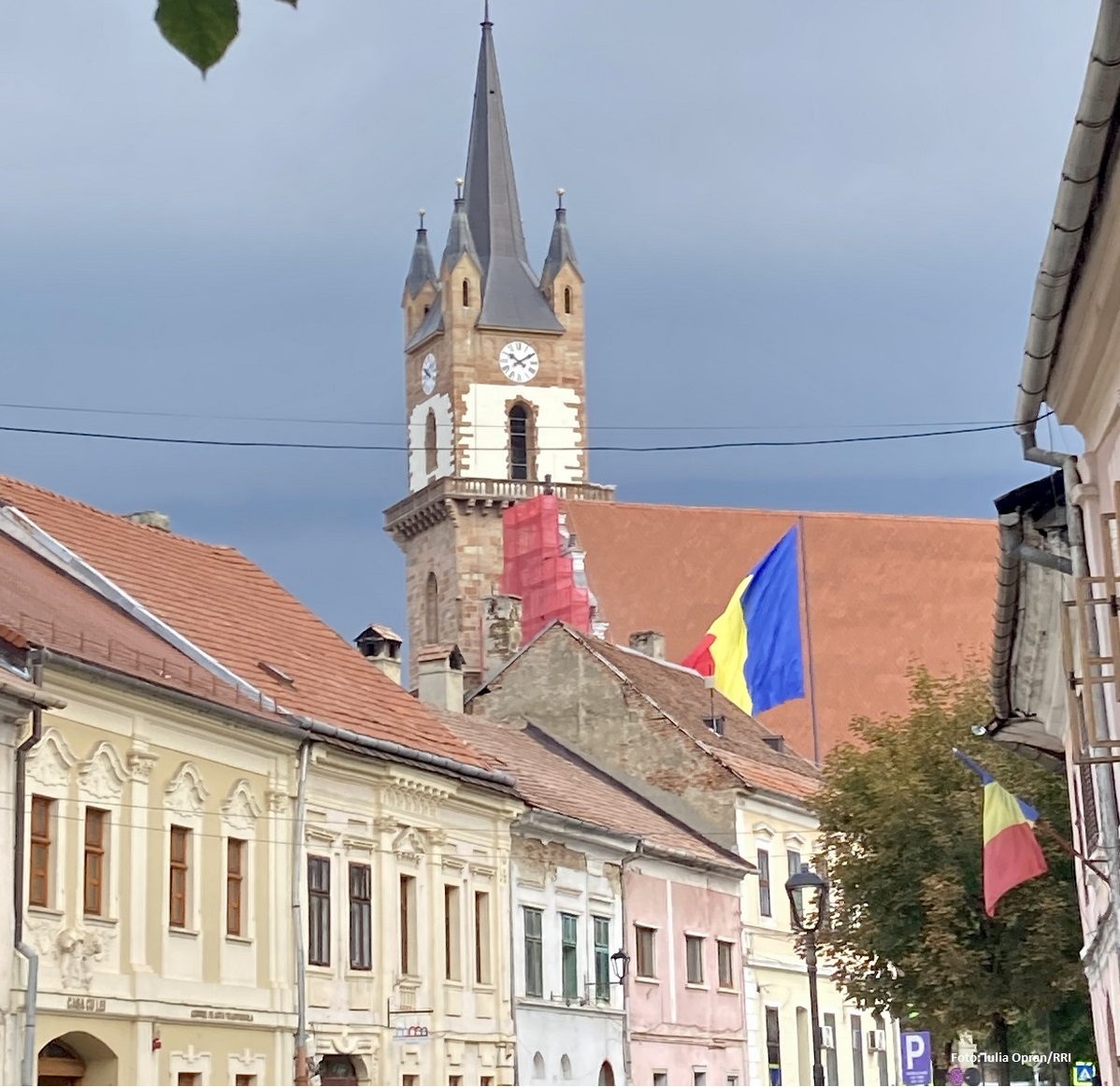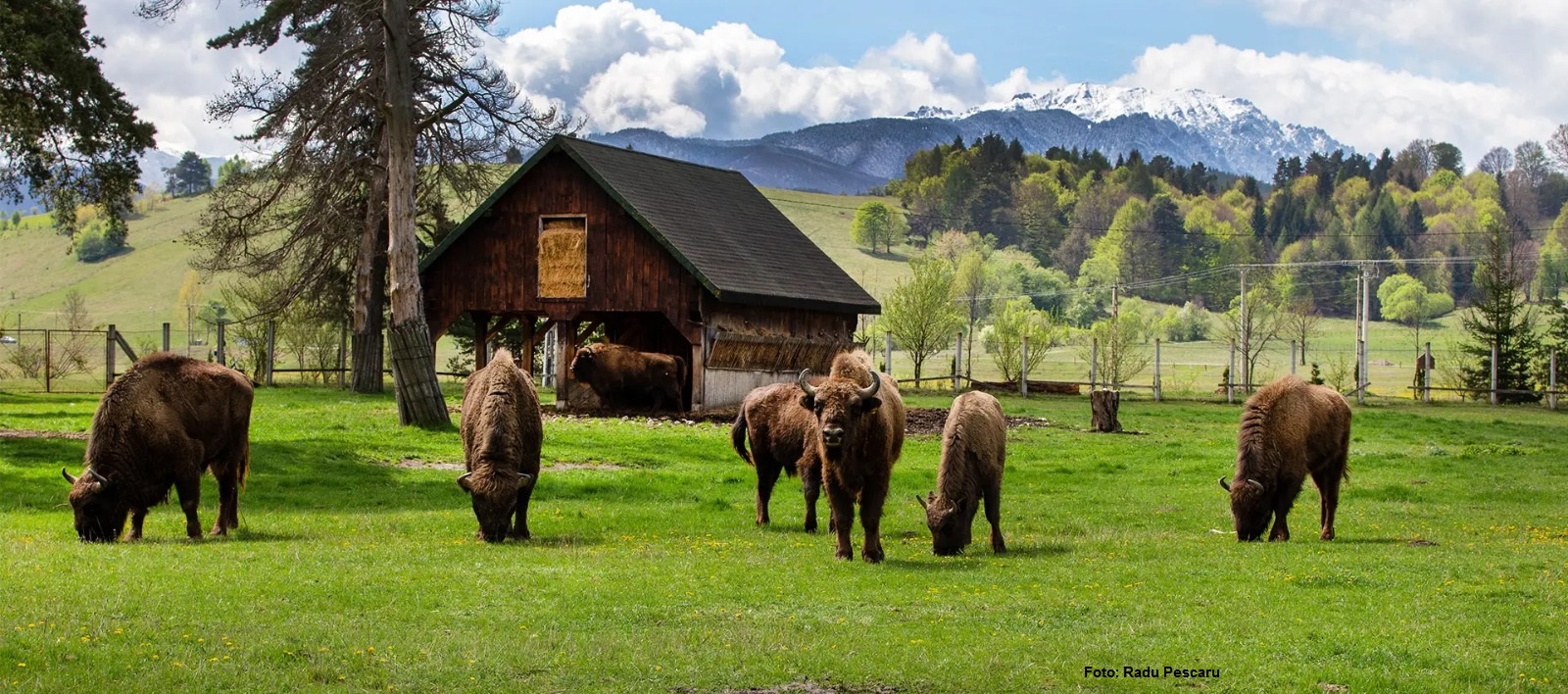Tourism in Gorj County
Located in southwestern Romania, by the middle course of the Jiu River, Gorj County boasts many tourist attractions. A tour of the county must definitely start with the city of Targu Jiu, which is home to the monumental works of Constantin Brancusi, the sculptor that had a great influence on modern art, born nearby, in Hobita. Brancusi’s works are spread all over the world. The largest collection is in France, the famous sculptor’s adoptive country. About 80 of his works were bequeathed to the French government, which naturalised the great Romanian sculptor a few years before his death, in 1957. In fact, Constantin Brancusi had a workshop in Paris, which is now a museum. Private museums and private collections in the United States also feature many of his works, such as ‘Domnisoara Pogany’ or ‘Maiastra’. Works signed by Constantin Brancusi can also be found in museums and galleries in Great Britain or Switzerland.

România Internațional, 06.04.2022, 11:17
Located in southwestern Romania, by the middle course of the Jiu River, Gorj County boasts many tourist attractions. A tour of the county must definitely start with the city of Targu Jiu, which is home to the monumental works of Constantin Brancusi, the sculptor that had a great influence on modern art, born nearby, in Hobita. Brancusi’s works are spread all over the world. The largest collection is in France, the famous sculptor’s adoptive country. About 80 of his works were bequeathed to the French government, which naturalised the great Romanian sculptor a few years before his death, in 1957. In fact, Constantin Brancusi had a workshop in Paris, which is now a museum. Private museums and private collections in the United States also feature many of his works, such as ‘Domnisoara Pogany’ or ‘Maiastra’. Works signed by Constantin Brancusi can also be found in museums and galleries in Great Britain or Switzerland.
The monumental works in Targu Jiu were made in memory of those who fell in the battles for the defence of the city, during the First World War. Brancusi, who had settled in Paris, returned to the country in 1937, at the request of the National League of Gorj Women and, within a year, carried out several outdoor works, lined up on a road called the Way of the Heroes. On this road, also known as Axis Brancusi, is the bridge where, on October 14, 1916, heavy battles took place and the city’s population managed to repel the German attack.
Next to the bridge, on the banks of the Jiu River, there lies the Public Garden that is home to Brancusi’s monumental works. The Gate of the Kiss stands right at the entrance, a place where newlyweds are traditionally photographed. Next, on the alley behind the Gate of the Kiss there are, on either side, 30 hourglass-shaped stone chairs, and at its end, another work by Brancusi, the Table of Silence, surrounded by twelve round chairs made of stone, also in the shape of an hourglass. At the other end of the axis there stands the Endless Column, made of hourglass-shaped bronze modules.
The city of Targu Jiu is the starting point for discovering other tourist attractions in Gorj County. For those who prefer ecumenical tourism, the Tismana, Polovragi and Lainici Orthodox monasteries are special destinations. The best known is the Tismana monastery, one of the oldest historical and feudal architecture monuments in Romania, built over 6 centuries ago.
Tourists visiting Gorj County will soon have the opportunity to obtain much more information about the area’s attractions, as we learned from Ovidiu Popescu, president of the Home to Brancusi Association, whose main activities focus on promoting and developing tourism in Gorj county:
We are now working on a digital guide that will allow tourists to discover by themselves the tourist destinations in Gorj County. I think we’ll finish implementing it in April. It is an application for mobile phones, which are obviously a tool available to everyone. It’s an application with the help of which anyone, not only tourists coming to Gorj, but anyone who downloads it can learn about everything that is interesting in Gorj from a tourist point of view. They will also find a database of accommodation facilities, a database of restaurants, bars, entertainment institutions, actually all the information a tourist needs, including contact details of public institutions and service providers.
Public institutions, local authorities, cultural institutions and tourism entrepreneurs in Gorj County have prepared a rich calendar of events for this year. The president of the Home to Brancusi Association, Ovidiu Popescu, hopes that these events will attract tourists both from the country and from abroad:
On June 24th, when we celebrate the World Day of the Traditional Blouse, Pestisani will be hosting a festival that is so beautifully called Authentic Romania, held in a beautiful setting. Obviously, the main organizer is the Pestisani municipality, but supported by all these cultural institutions in Gorj and the Home to Brancusi Association.
The mountainous area in the northern part of Gorj County, with glacial lakes, caves, some of them nature monuments, and narrow gorges, dug in stone by fast running waters, is a very suitable destination for those who like adventure tourism. But how to combine adventure tourism with local music and gastronomy? We learnt that, of course, from Ovidiu Popescu, the president of the Home to Brâncuşi Association:
After a two-year break, the 5th edition of the Ranca Rock Festival, Transaplina, will finally take place in July. Obviously, they couldn’t have picked a better place for a rock festival than this, on top of the mountain, in the fresh air, a sensational landscape and with welcoming people! Not to mention the culinary attractions. As for the line-up, I wouldn’t want to disclose anything now, but I can tell you that they are the best rock bands of the moment in Romania and there will also be some surprises from abroad.
Ranca is one of the newest ski resorts on the tourist map of Romania. As for Transalpina, it is the road located at the highest altitude in the country. The highest point is Urdele Pass, at 2145 meters. It is one of the few roads in Romania that one can take and reach the clouds. Transalpina connects Transylvania with the southern part of the Southern Carpathians. (MI)






























